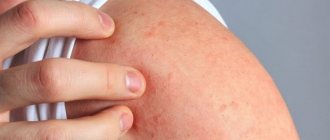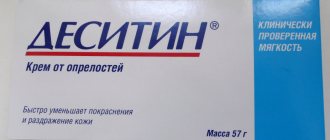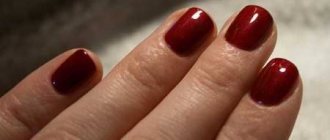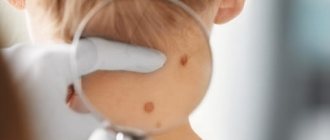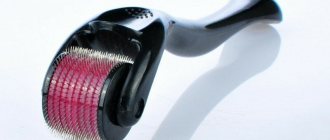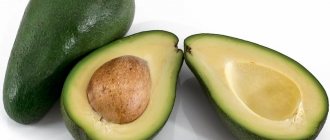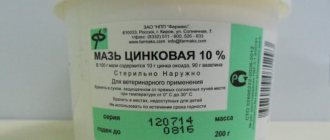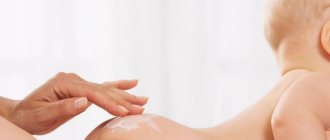Atopic dermatitis (AD) in children is one of the most common diseases of young children. This disease is an allergic inflammation of the skin, which is characterized by itching, as well as frequent relapses and age-related characteristics of the skin rash. As a rule, dermatitis appears at an early age; if left untreated, it continues to progress into older age, which significantly worsens the quality of life of patients and their families.
For the development of this pathology, a hereditary predisposition to the development of allergies is of great importance. Therefore, this disease is often combined with other forms of allergies, for example, bronchial asthma, allergic conjunctivitis and rhinitis, food allergies. There is such a thing as “atopic march” . Atopic march is a natural progression of allergic diseases. As a rule, it all starts with a food allergy, which often gives impetus to the development of atopic dermatitis. In the absence of adequate treatment, the march progresses. Over time, the child develops allergic rhinitis. Over time, a more dangerous, in some cases, life-threatening condition arises - bronchial asthma.
Treatment of dermatitis: ointments and creams
Dermatitis therapy always includes the use of topical products. How do they differ and which release form is better to choose?
- The ointment is made on a fat basis. These can be vegetable and mineral oils or animal fats. Due to this, it has a dense, viscous structure, is absorbed into the skin for a long time and leaves behind a sticky or greasy film. The active components of the ointment penetrate deeply into the skin. Typically, such products are used to treat dry rashes and are not used for application to wet surfaces.
- The cream is produced on a hydrophilic basis, due to which its structure is lighter than that of an ointment. The product is easily and quickly absorbed, leaving no traces on the skin. But at the same time, the depth of its penetration is less than that of the ointment. Such products are suitable for application to moderately weeping rashes.
When treating dermatitis, topical products should solve the following problems:
- Reduce the intensity of the inflammatory process.
- Relieve itching and burning.
- Fight swelling and redness of the skin.
- Disinfect the skin.
- Promote the regeneration processes of damaged skin.
- Nourish and protect the skin.
Depending on the main active ingredients, ointments and creams for dermatitis can have a hormonal and non-hormonal composition.
Symptoms of weeping dermatitis
Symptoms of the disease may vary, depending on the age of the patient.
In adults, lesions form in natural folds of the skin, on the face and neck, arms and legs. A rash and erythema (redness) with cloudy contents appear; as the disease progresses, the rash opens, forming weeping erosions.
Common symptoms can be identified for all ages: swelling and redness of the skin at the locations of the lesions, the presence of a rash with cloudy contents.
The disease is characterized by severe itching - its intensity is influenced by the severity of damage to the nerve endings located in the skin; burning and painful sensations, a feeling of dryness or tightness; in addition, a person experiences emotional discomfort, since dermatitis has an unpleasant appearance.
Weeping dermatitis, if not properly treated, can have complications - damage to large areas of the skin, discharge of purulent contents (in cases of infection), and in rare cases, sepsis (blood poisoning) is possible.
You can see what weeping dermatitis looks like in the photo section.
Hormonal cream for dermatitis
Hormonal ointments and creams against dermatitis contain glucocorticoid hormones. These drugs are usually prescribed during the acute period of the disease and for extensive skin lesions. The effect of their use becomes noticeable after just a few sessions of use. When acute symptoms of dermatitis gradually decrease, it is recommended to switch to treatment using non-hormonal agents.
Hormonal drugs for dermatitis are divided into 4 groups:
- First (low activity). This group includes drugs for dermatitis, characterized by slow absorption and a slight decrease in the intensity of the symptoms of the disease. Due to the low activity of the main components, such drugs usually require frequent use and a long course of treatment. Corticosteroids included in this group are usually prescribed for minor rashes and inflammatory processes. However, despite their relatively low effectiveness, they are the safest of all hormonal drugs. If there is a need to prescribe glucocorticosteroid drugs to a child, doctors usually give preference to such dermatitis creams for children.
- Second (moderate action). Drugs in this group are more effective, so they are prescribed for moderate and moderate inflammatory processes. The frequency of use is up to 3 times a day.
- Third (high activity). The agents included in this group are characterized by a long-lasting action and a fairly high intensity of absorption of the active components. The frequency of application to the affected areas of the skin is 1-2 times a day.
- Fourth (super strong action). This group includes the most active and aggressive glucocorticosteroids. They are characterized by a prolonged action and a rapid decrease in the intensity of the symptoms of the disease. They are used for severe inflammatory processes, as well as in cases where weaker drugs do not give the desired result. The duration of treatment is no longer than 7 days (under the supervision of a doctor), the frequency of application is 1 time per day.
The main rule to remember when treating dermatitis: never prescribe hormonal drugs to yourself. Their composition is quite aggressive, so you should use such products only as prescribed by a doctor, without exceeding the recommended dose and frequency of application. Otherwise, there is a danger of side effects, including skin atrophy. Withdrawal of corticosteroids should occur gradually. In addition, hormonal products for external use have contraindications: they are not used in cases of liver and kidney dysfunction, in the presence of fungal skin infections and tuberculosis, and skin cancer is also a contraindication.
External therapy of atopic dermatitis: a view of the problem from the perspective of a pediatrician
Atopic dermatitis (AD) ranks first in the structure of allergic diseases in children, especially in children of the first years of life. AD most often begins in early childhood and has a relapsing course. As a rule, blood pressure is the earliest manifestation of atopy, and in some children it is the beginning of the “allergic march.” Of course, blood pressure significantly reduces the child’s quality of life, so the problem of timely and adequate treatment of the disease has now acquired particular medical and social significance.
The high incidence of the disease, its wave-like course, and frequent relapses of the disease lead to the fact that it is the practicing pediatrician, as a rule, who solves the tactical problems of treating blood pressure in a child. At the same time, issues related to diagnosis and determination of treatment strategy must be resolved in each specific case by an allergist.
The importance of the role of the pediatrician in the monitoring and treatment of patients with AD is also emphasized in the fundamental national documents on the diagnosis and treatment of atopic dermatitis in children. For example, the conciliation document of the Association of Children's Allergists and Immunologists of Russia is called “Modern strategy for the treatment of atopic dermatitis: a pediatrician’s action program.”
It is obvious that the distribution of children with AD in different medical observation groups is different. Thus, according to the allergology department of Children's Clinical Hospital No. 38 of the FU Medbioextrem, children with atopic dermatitis made up 29.5% of all patients hospitalized in the department over 3 years. Of these, the vast majority of children were under the age of 7 years - 78.6%. A widespread form of AD was observed in 62% of observed children, a diffuse form - in 15.6%, severe AD was diagnosed in 31% of patients. Secondary skin infection was detected in 35.7% of patients.
The structure of the distribution of blood pressure according to the forms and severity of the disease turned out to be somewhat different in the pediatric ward, for patients for whom the diagnosis of blood pressure is not typical (children with blood pressure are usually hospitalized in the allergy department). As a concomitant diagnosis, atopic dermatitis was noted in more than 1/4 of children hospitalized in the PBO, while the vast majority of patients with AD were also under 7 years of age. However, mild AD was observed in 1/3 of patients, and moderate AD was observed in 2/3. Moreover, local and less common forms predominated. The diffuse form with severe hypertension in children observed in the boxed department was diagnosed extremely rarely.
In the outpatient practice of a local pediatrician, AD occurs frequently: approximately every third child under the age of 3 years has manifestations of AD, but mainly we are talking about local forms of mild and moderate severity, while children with severe and complicated AD are observed by an allergist. Therefore, the introduction of algorithms for the treatment of blood pressure in children is one of the urgent tasks of modern pediatrics.
Treatment of AD, of course, should be comprehensive, individual and depend on the age of the child, the form and stage of the disease.
General principles of AD treatment include:
- diet therapy;
- elimination regimes, environmental control;
- systemic pharmacotherapy;
- external (local) therapy;
- educational programs.
External (local) therapy is a mandatory component of complex treatment of AD. Main areas of local therapy: - elimination (reduction) of inflammatory changes on the skin and the main symptoms of AD associated with it (itching, hyperemia, swelling, skin rashes, etc.);
- reducing skin dryness, improving skin barrier functions;
- prevention and elimination of secondary skin infections.
It is known that the basis of the pathogenesis of AD is allergic inflammation of the skin. Consequently, all patients with AD need anti-inflammatory therapy, mainly external. The prescription of external anti-inflammatory drugs is the main method of treating children with AD and does not depend on the causes of its occurrence. However, the nature of external therapy should be determined by the stage of activity of skin inflammation and its clinical symptoms.
Anti-inflammatory external agents can be divided into two main groups: topical glucocorticosteroids (GCS) and anti-inflammatory drugs that do not contain glucocorticosteroids.
The effectiveness of external GCS in patients with AD has been proven by many years of practice and numerous controlled studies. Currently, GCS are, of course, the most effective anti-inflammatory drugs. However, until recently, both doctors and patients experienced persistent “corticosteroid phobia”, which was explained by the presence of side effects in the previous generation of corticosteroids (fluorinated), as a result of which these drugs were not approved for use in young children. Currently, external corticosteroids of “increased safety” have been created and have undergone controlled clinical trials in pediatric practice: methylprednisolone aceponate (Advantan), mometasone furoate (Elocom), alklometasone dipropionate (Afloderm), hydrocortisone 17-butyrate (Lokoid). Advantan (emulsion, cream, ointment and fatty ointment), Afloderm (cream and ointment) and Lokoid (ointment) are approved for use in children from 6 months of age, and from 2 years - Elokom (lotion, ointment, cream) .
Assessing the effectiveness and safety of external corticosteroids is most important for pediatric practice. The fact is that the skin of children has anatomical and physiological characteristics that increase the risk of side effects when using topical corticosteroids. The skin of children is more sensitive to the effects of corticosteroids: drugs are absorbed into the bloodstream in greater quantities, which increases the risk of increasing their concentration in the blood, as well as the development of local side effects associated with inhibition of collagen and elastin synthesis in the skin and cell mitosis. Therefore, it is so important to take into account age restrictions when prescribing drugs, and the duration of therapy should be determined in accordance with the instructions for use of this drug (in all cases it should not exceed one month with daily use of the drug). In addition, the recommended dosage (frequency of application to the skin) should never be exceeded. So, it is enough to use Advantan and Elokom once a day.
Considering the long chronic course of blood pressure and the need for long-term external therapy, the use of the group has always been the focus of attention of pediatricians. For many years, to treat the chronic and subacute stages of dermatitis, drugs such as ASD preparations of the III fraction, sulfur, tar, naftalan oil, zinc oxide, dermatol, and ichthyol have been used. The effectiveness of these products is low, in addition, most of them have a strong odor and contaminate clothes. Currently, these drugs are used less and less.
The most recent advance in the clinical use of steroid-free topical anti-inflammatory drugs is the advent of the calcineurin inhibitor pimecrolimus (Elidel 1% cream). According to the mechanism of anti-inflammatory action, pimecrolimus is a selective inhibitor of pro-inflammatory cytokines. The principal property of pimecrolimus is lipophilicity, as a result of which it is distributed in the skin and does not penetrate the systemic circulation. The clinical significance of this property is the absence of systemic action and accumulation, which allows the drug to be used for a fairly long time. When started early, with the appearance of the first signs of inflammation, Elidel prevents the development of exacerbations and provides long-term control over the disease. Elidel is well tolerated by patients of all age groups and can be safely used on all areas of the body, including sensitive areas - face, neck and skin folds. This drug has passed all the necessary controlled clinical trials, confirming its high effectiveness and safety in the treatment of blood pressure in children starting from 3 months of age. Our study also showed high efficiency and good tolerability of the drug in young children suffering from mild and moderate atopic dermatitis without pronounced clinical signs of secondary infection.
The drug is applied to the skin 2 times a day (if necessary, it can be applied to large surfaces of the skin), in combination with moisturizers, which can be used immediately after using the drug. An exception is the use of pimecrolimus immediately after swimming, when it is applied to the skin after a moisturizer.
When prescribing external anti-inflammatory treatment to a child with AD, it is extremely important to choose the right drug, depending on the stage of AD and the severity of the disease. Basic anti-inflammatory therapy is currently carried out using two classes of anti-inflammatory drugs: corticosteroids and pimecrolimus. If a patient has severe atopic dermatitis, therapy should always begin with the administration of external corticosteroids. For mild and moderate AD, the choice of drug is determined by the stage of the disease and previous therapy: in case of exacerbation, pimecrolimus is prescribed; if there is no effect within 5 days, external corticosteroids are prescribed. When positive dynamics are achieved, you can switch to pimecrolimus therapy, if necessary - long-term, up to a year.
Thus, therapy with external corticosteroids, in the apt expression of Professor G. A. Samsygina, can be called “fire therapy,” while when inflammation subsides or with moderately severe inflammatory phenomena, it is advisable to use pimecrolimus or other anti-inflammatory non-steroidal external agents.
Skin infections in patients with AD, especially those caused by Staphylococcus aureus (St. aureus), significantly complicate the course of atopic dermatitis and worsen the prognosis of the disease. Moreover, in some cases, both pyoderma and allergic reactions to skin microflora are observed, and St. aureus may act as a superantigen. In the case of an uncomplicated localized skin infection, the child can be prescribed fucorcin, an aqueous solution of methylene blue and other similar antiseptics. If such treatment is insufficiently effective, ointments with antibiotics and antiseptics (gentamicin, lincomycin ointments), antifungal ointments (clotrimazole, nizoral) or combination drugs that include an antibacterial, antifungal agent and an external glucocorticosteroid (pimafucort, triderm, etc.) are used.
When prescribing external anti-inflammatory drugs, you should always remember the need to use moisturizers/emollients . As remission occurs, in no case should the intensity of moisturizing treatment be reduced, since dry skin itself can provoke itching and serve as a factor in the development of exacerbation. It should be noted that to restore the barrier function of the skin, it is necessary to moisturize it (hydration, saturation with water), and also restore its lipid layer with the help of emollients. Many modern preparations for external use combine both of these properties, which makes their use more effective. However, moisturizing and softening products for skin care for children with AD should not contain stabilizers, fragrances, or alcohol. Mineral oils, petroleum jelly, lanolin can also provoke an exacerbation of blood pressure, as they impair the synthesis of lipids in the skin. Such products as Trixera cream, Atoderm, Lipikar, Topikrem, Mustela have proven themselves well. A moisturizer and emollient must be applied quite often, sometimes 5–10 times a day, so that the skin does not remain dry. After bathing, apply the product immediately to slightly damp skin.
The choice of the optimal dosage form of the drug for external use is also important. Thus, for acute inflammation with weeping, lotions, aerosols, lotions, and emulsions are most effective; for acute inflammation without weeping - water mash, aerosols, creams, pastes; if the inflammation is subacute - creams, ointments; for chronic inflammation - ointments, fatty ointments, and in areas of lichenification - ointments with keratolytic properties.
Thus, only a differentiated approach to the treatment of AD in children can ensure stable remission of the disease. External therapy for AD in children includes the use of anti-inflammatory local drugs in combination with moisturizers and emollients and, if necessary, antiseptic, antibacterial and antimycotic drugs for topical use. During the period of exacerbation of the disease, it is most important to rationally determine the tactics of anti-inflammatory therapy.
For severe cases of AD, local corticosteroids are prescribed; for mild and moderate cases, anti-inflammatory drugs that do not contain steroids are first used, and if there is no effect within 5 days, they switch to corticosteroids; when acute inflammation subsides, they return to nonsteroidal drugs, which are used until remission of blood pressure is achieved. During the period of remission, you can limit yourself to moisturizing and softening agents used “as needed” (Fig. 1). This strategy for external therapy of blood pressure is somewhat reminiscent of a “stepped approach” to the basic therapy of bronchial asthma, when the doctor determines the optimal choice of drugs depending on the severity of the disease and the degree of control over the symptoms of the disease. Very figuratively, we can compare this approach to external treatment of blood pressure with traffic light signals (Fig. 2): “red” - severe exacerbation, corticosteroids are indicated, “yellow” - anti-inflammatory drugs that do not contain steroids, “green” - moisturizers and emollients. The Scientific and Practical Program of the Union of Pediatricians of Russia “Atopic dermatitis in children: diagnosis, treatment, prevention” emphasizes that “only timely and adequate treatment of children with atopic dermatitis ensures stable clinical remission of the disease.”
O. V. Zaitseva, Doctor of Medical Sciences, Professor of Russian State Medical University, Moscow
Non-hormonal cream for dermatitis
Non-hormonal preparations for dermatitis include herbal ingredients, vitamins, zinc, ichthyol, tar and other safe ingredients. They are characterized by the following positive properties:
- Unlike hormonal products, these products can be used for a long time.
- They do not cause addiction or withdrawal symptoms, almost never cause allergies (except in cases of individual intolerance to the active components of the product) and have no side effects.
- If you are looking for a suitable cream for atopic dermatitis in children, non-hormonal drugs are exactly what you need.
- Suitable for use during pregnancy and lactation (but only as prescribed by a doctor).
However, it must be taken into account that non-hormonal drugs have a significant drawback: when using them, the first positive results of treatment are not immediately noticeable. Therefore, non-hormonal drugs are usually prescribed during the period of remission of the disease.
Choosing a cream for dermatitis on the face and body, depending on the type of disease
Dermatitis is divided into the following types:
- Atopic.
- Allergic.
- Seborrheic.
- Contact.
- Diaper.
These types of diseases have different symptoms and causes of occurrence. Therefore, there is no universal remedy for dermatitis that would be equally effective in treating all types of this disease. In each specific case, the dermatologist prescribes the drug to the patient individually.
Atopic dermatitis: ointments and creams for children and adults
Atopic dermatitis occurs mainly in childhood, so doctors try to prescribe predominantly non-hormonal drugs to treat it. However, if the rash affects large areas of the body and is accompanied by severe skin itching and pain, a dermatologist may recommend a hormonal cream for atopic dermatitis for children. These may be drugs based on hydrocortisone 17-n-butyrate, alklometasone, methylprednisolone aceponate. In addition to glucocorticosteroids, during the acute phase of the disease, antimicrobial and antifungal agents are prescribed for external use: they prevent the development of pathogenic flora that can get into areas of scratching. It is also important to use local preparations that promote the resorption of infiltrate and are made on the basis of naphthalan, birch tar, sulfur and ichthyol.
When remission of the disease occurs, prophylactic use of products with polyunsaturated fatty acids, plant extracts (oak bark, string, chamomile), vitamins E and A is recommended.
Treatment of weeping dermatitis
Before starting treatment, it is necessary to conduct a diagnosis. Diagnosis is very important, since weeping dermatitis has a similar clinical picture to eczema; this is usually not difficult for a specialist, but for an accurate diagnosis, the specialist conducts the following studies:
- Scraping - to exclude other skin diseases and identify the possible causative agent of the disease;
- Tests to identify allergies and the source of allergies;
- A general blood and urine test is used to determine the cause of dermatitis and identify concomitant diseases.
Often, treatment involves complex therapy, which is aimed at eliminating the cause of weeping dermatitis and relieving the symptoms characteristic of it.
- Antihistamines (anti-allergic) drugs to relieve itching and swelling of tissues;
- Sometimes sorbents may be indicated (if dermatitis occurs due to allergies);
- Prebiotics to normalize intestinal microflora;
- Antibiotics - in case of secondary infection (when scratching, often in children)
- Local preparations for eliminating the inflammatory process, relieving the sensation of itching and for rapid tissue regeneration; a popular drug that copes with these purposes is Losterin.
- Antiseptic solutions are used to treat lesions when opening pustules (rashes).
- Severe itching can cause sleep disturbances and affect mental health, in these cases sedatives are indicated.
In addition to medications, it is recommended to follow a diet; this is one of the factors contributing to a rapid recovery. The diet involves eliminating foods that can cause allergic reactions (citrus fruits, nuts, honey, etc.).
For weeping dermatitis in infants, special attention is paid to correcting nutrition and following the mother’s diet if she is breastfeeding.
When weeping dermatitis passes into the chronic stage, medications are indicated to raise and strengthen the immune system.
Self-medication in this case is unacceptable, especially in relation to the treatment of children. The doctor prescribes medications based on test results and taking into account the characteristics of the body.
Seborrheic dermatitis cream
Seborrheic dermatitis usually affects areas of the body that have a large number of sebaceous glands. One of the most unpleasant signs of this type of disease is that it is often localized in exposed areas of the body. This causes a person not only physical, but also psychological discomfort. Therefore, it is very important to pay special attention to choosing a suitable cream for seborrheic dermatitis on the face (especially in the nasolabial triangle), scalp, neck and other affected areas.
The cause of seborrheic dermatitis is infection of the skin by yeast-like fungi Malassezia, so external antimycotics (antifungal drugs) are prescribed to combat the disease. For treatment, external agents based on ketoconazole, fluconazole, and clotrimazole are used. Another task, in addition to normalizing the skin microflora, is to ensure rapid exfoliation of scales and normalization of sebum (sebum) production.
Treatment of weeping dermatitis with folk remedies
Traditional medicine has many recipes to combat various dermatological pathologies. Methods of therapy may include tinctures, lotions, ointments, etc., based on herbs or other natural ingredients, but these remedies are ineffective or not effective at all. Herbal medicine can relieve some symptoms, but will not have a detrimental effect on the cause of dermatitis, and in some cases it will worsen the disease. Some traditional medicines can be used as an addition to the main treatment and should only be reported to a doctor. You should not prescribe any folk remedies yourself, especially if a child needs help.
Allergic dermatitis cream
This form of the disease occurs as a result of human contact with an allergen - chemical, food, drug, etc. The disease is characterized by dry and itchy skin, the appearance of flaky, reddened areas, and the formation of papules and blisters. Most often, the rashes are localized on the hands and face.
Treatment involves stopping contact with the allergen and using antihistamines. As for the choice of cream for dermatitis on the hands and face, it depends on the intensity of the symptoms, age and general health of the patient. For mild forms of the disease, remedies based on string, chamomile, violet, menthol, and ichthyol are prescribed. The use of calcineurin inhibitors may also be recommended. If we are talking about a severe form of allergic dermatitis, the use of methylprednisolone aceponate, hydrocortisone acetate, betamethasone dipropionate may be required.
Causes of weeping dermatitis
The causes of weeping dermatitis are divided into several points: distant, close, obligate, selective factors.
Remote factors causing the development of the disease:
- Hereditary factor - dermatitis in infants in 40% of manifestations, occurs due to allergies of one or both parents;
- Predisposition – having once contracted any form of weeping dermatitis, 50% of patients remain sensitive to the disease;
- Low immunity;
- Acute and chronic diseases of internal organs;
Related factors that can trigger the development of the disease:
- Psychological illnesses, prolonged stress, nervousness - very often a strong nervous shock can cause a decrease in the body’s protective functions and, as a result, a decline in immunity.
- The entry of pathogenic substances into the human body - allergens, chemicals that have a detrimental effect on the skin.
- Diseases of the stomach and/or intestines - improper functioning or malfunction of these organs is the most common cause of weeping dermatitis.
Obligate factors (arising under the influence of external factors):
- Pathogenic radiation - radiation, prolonged exposure to direct sunlight;
- Overheating or, on the contrary, hypothermia of the body;
- Contact with chemicals – acid or alkali.
Selective factors:
- Allergy – food (to food or medicine);
- Allergies - to cosmetics, insect bites;
Weeping dermatitis is essentially an advanced stage of any other type of dermatitis (domestic, occupational, fungal, bacterial), in addition to the above, can occur as a result of improperly selected treatment or ignoring the disease.
Cream for diaper dermatitis
Diaper dermatitis is a common problem occurring in infancy. It appears as a result of non-compliance with hygiene rules, insufficient removal of excrement residues from the skin in the anogenital area of the baby, irrational use and rare changes of diapers, and excessive sweating of the baby. This type of disease can affect not only children, but also adults who are forced to wear diapers - the elderly and bedridden patients.
To reduce the symptoms of this type of disease, non-hormonal children's remedies for dermatitis are usually prescribed - for example, with zinc, panthenol, and plant extracts. To prevent the appearance of diaper dermatitis, you can use La-Cri diaper cream. It contains zinc oxide, panthenol, shea and jojoba butters, beeswax and licorice extract.
If an infection joins the rash and inflammation begins, antimycotics and antibiotics are prescribed.
Cream for dermatitis during pregnancy
Dermatitis in pregnant women is quite common. Even if a woman has never suffered from this disease before, it may first appear during pregnancy. One of the reasons for its appearance during this period is a change in the hormonal background of the expectant mother and a decrease in the defenses of her body.
In most cases, the disease goes away on its own after the birth of the child. But this does not mean that you just need to wait for the body to heal itself, because during pregnancy the disease can cause serious physical and emotional discomfort to a woman and make her irritable. In addition, if an infection gets into the scratching area, there is a real danger of inflammation and suppuration of the skin.
Choosing a remedy for the treatment of dermatitis in pregnant women is a serious task, which only a qualified doctor can cope with. Therefore, under no circumstances use drugs that you are not sure of, and do not follow unverified advice and recommendations from neighbors and friends. Trust a professional in this matter, because an incorrectly selected product can cause harm not only to you, but also to the child.
Hormonal creams for dermatitis are prescribed to pregnant women extremely rarely - only in cases where the benefits of their use outweigh the potential harm. If there is no other option, then the doctor must assess the possible risks and prescribe a glucocorticosteroid drug with a minimum dose of hormones.
If possible, instead of corticosteroid medications during pregnancy, it is recommended to use moisturizing and nourishing products containing natural ingredients - vitamins, zinc, plant extracts and oils.
La-Cri is your assistant in the prevention of dermatitis
La-Cri's non-hormonal products, made from natural, safe ingredients, are excellent for accelerating recovery and preventing this disease. For example, there are many positive reviews about the use of La Cree cream for dermatitis. The active components included in the La-Cri cream for dry skin provide delicate care for damaged skin:
- Natural hypoallergenic oils (wheat germ, jojoba and shea) provide skin nutrition, combat dryness and normalize water-lipid balance.
- Plant extracts (licorice and string) help cope with itching, redness and flaking.
- Beeswax perfectly softens and nourishes the skin.
Prevention of weeping dermatitis
It is easier to prevent any disease than to treat it, tinea versicolor is no exception, in order to avoid the development of the disease you should:
- Adhere to the rules of proper nutrition - to prevent diseases of the stomach and intestines;
- Treat acute and chronic diseases - they are often the main cause of reduced immunity;
- Maintain immunity, especially after illnesses, in the autumn-spring period, after long-term use of strong medications;
- For people prone to allergies, exclude allergens;
- Avoid stress, maintain psychological health, and consult a specialist if necessary.
If dermatitis does appear, then for a quick recovery and to prevent recurrence of the disease, you should:
- Follow the recommendations of your doctor, do not interrupt or stop treatment without consulting a doctor;
- Compliance with hygiene rules, proper treatment of affected skin areas;
- Avoid sources that provoke allergies.
Exclude pathogenic factors.
If symptoms indicating weeping dermatitis appear, you should immediately consult a doctor, this will allow you to start treatment on time, which will have a beneficial effect on the duration of therapy and reduce the risk of developing negative consequences and relapses.
Clinical researches
La-Cri creams for sensitive skin and La-Cri cream for dry skin are recommended by the St. Petersburg branch of the Union of Pediatricians of Russia.
The conducted clinical study proves the high efficiency, safety and tolerability of products for daily skin care of children with mild and moderate forms of atopic dermatitis and during remission, accompanied by a decrease in the quality of life of patients. As a result of therapy, a decrease in the activity of the inflammatory process, a decrease in dryness, itching and flaking was noted.
Sources:
- Tulchinskaya, V.D. Nursing assistance to children / V.D. Tulchinskaya. — Moscow: Russian State University for the Humanities, 2016.
- Andropova T.V., Gudina M.V., Odintsova I.N., Hygiene of children and adolescents, Siberian State Medical University Publishing House, 2022.
- Reken Martin, Schaller Martin, Sattler Elke, Burgdorf Walter, Atlas of Dermatology, MEDpress-inform, 2022.
Photos of dermatitis
Photo album on the disease
Treatment of weeping dermatitis with Losterin
Improper skin care for dermatological diseases slows down recovery, so it is important to choose products suitable for problem skin that do not dry out, but at the same time cleanse. A common product is Losterin gel for showering or Losterin cream for skin care. Thanks to its composition, it protects the skin from dryness and cracks, helps reduce flaking and has a regenerating effect. Used for the treatment and prevention of weeping dermatitis.
